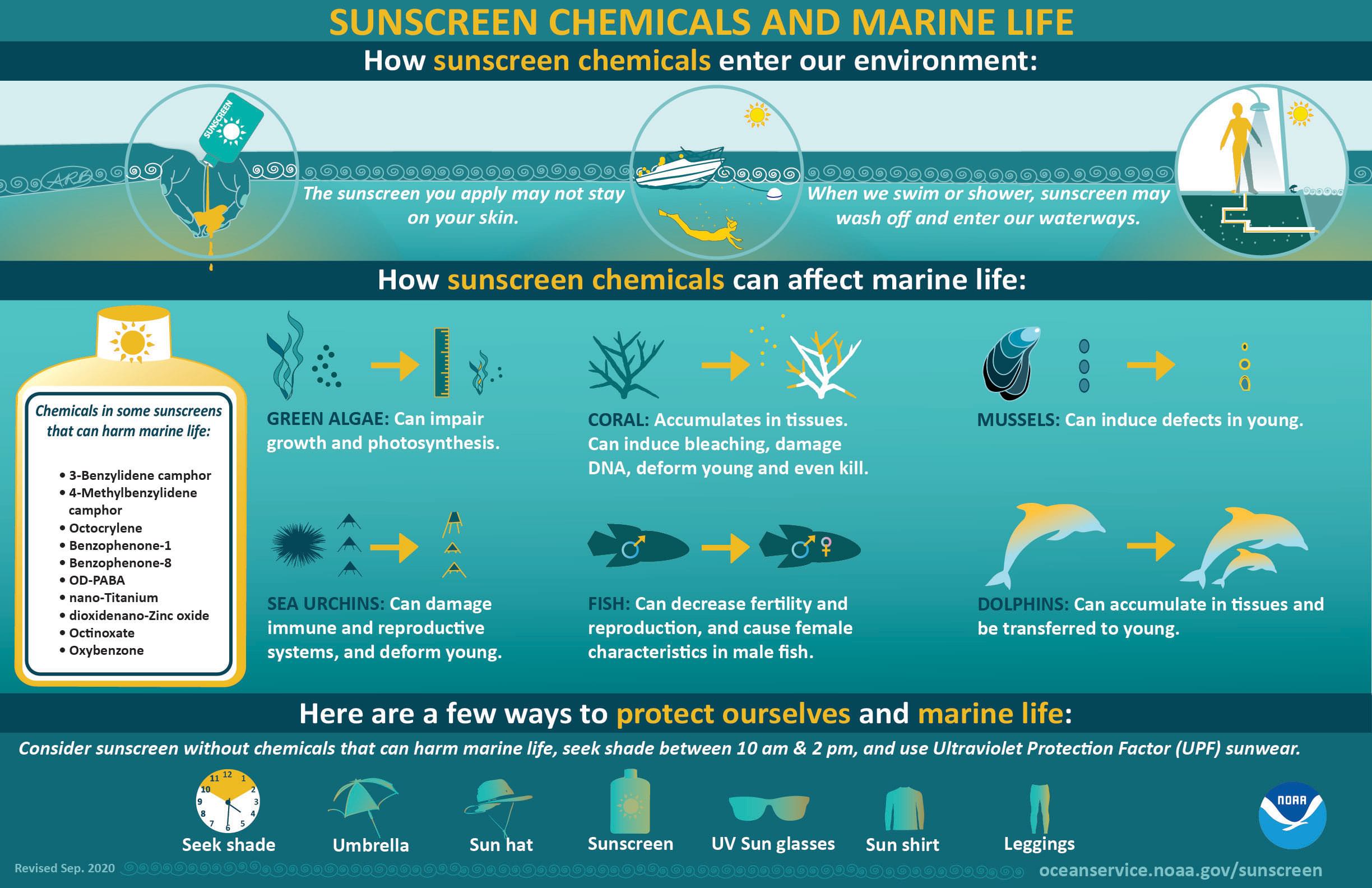You’ve probably seen headlines popping up all over saying things like “Palau is first country to ban ‘reef toxic’ sun cream,” “People over Coral: Florida could ban sunscreen bans,” and “Hawaii Passes Bill Banning Sunscreen that can Harm Coral Reefs.” Or maybe you watched our "Friday Gear Deep Dive" all about Stream 2Sea.
As a diver you are probably also diligent about using reef safe sunscreen like Stream2Sea, opting for physical barriers in place of sunscreen, and avoiding other potentially harmful substances. But do you actually know why choosing reef safe sunscreen, opting for physical sun protection, and using reef safe personal care products are so important?
Corals, anemones and zooxanthellae, oh my!
Understanding why sunscreen is bad for corals requires you to understand what exactly corals are! They are both plants and animals as well as minerals. Inside of the polyp of the coral lives a photosynthetic algae called zooxanthellae. These tiny algae cells help corals meet their nutritional needs through photosynthesis and are responsible for the vibrant colors of many corals and anemones.
Many sunscreens use chemical compounds to disrupt and block the impact of UV and UVB light on skin which are then washed into the watershed or directly into the ocean. Unfortunately, these chemical compounds can then disrupt both the photosynthesis corals require to meet their nutritional needs and also negatively impact the genetic composition of vulnerable corals and can damage the immune systems, reproductive systems, and impair growth in species like urchins, fish, algaes, and marine mammals.
The science behind the bans
Two landmark studies in 2013 and 2016 identified benzophenone-2 (BP-2 found in personal care products) and benzophenone-3 (BP-3 found in sunscreen) as toxic to corals as well as dozens of other marine species (Downs et al. 2013, Downs et al. 2016)! These two chemicals cause what is known as “genotoxicity” in juvenile corals as well as other species. Genotoxicity essentially disrupts the genetic code of the animal and can cause deadly growth defects as well as increase vulnerability to disease and, in the case of corals and anemones, bleaching. Unfortunately, neither BP-2 or BP-3 are treated for in wastewater treatment processes around the world. Meaning, even if you are far from the ocean here in Washington DC, the products you use that have BP-2 and BP-3 in them that you wash off at the end of the day are still ultimately making it into the ocean and actively harming marine life.
There are other chemicals commonly found in sunscreens and personal care products that are also incredibly harmful to corals and marine life. While many of these have not been found to cause genotoxicity like BP-2 and BP-3, they are known to commonly disrupt the photosynthetic processes of numerous species and ultimately render them increasingly vulnerable to bleaching, disease, and climate change. These other chemicals and names that you should avoid include:
- oxybenzone (BP-3)
- octinoxate
- octocrylene
- benzophenone-1
- benzophenone-8
- OD-PABA
- 4-Methylbenzylidene camphor
- 3-Benzylidene camphor
- nano-titanium dioxide
- nano-zinc oxide
It is worth noting that titanium dioxide and zinc oxide themselves are not toxic. However, when they are in the “nano” compound that mainstream sunscreens and beauty products use they are and should be avoided.
Reading the ingredient lists on your sunscreens and personal care products is something that we should all get into the habit of as AWARE divers! Not all sunscreens and products that claim to be "reef safe" actually are, and there are definitely products that mention nothing about reef safety that are actually safe for the ocean! While choosing reef safe products is critically important for helping limit our impact on the ocean, the easiest thing we can do to help limit the introduction of potentially harmful chemicals into the water is to not wear them and to opt for physical barriers like hats and rashguards. After all, the ocean and the corals have enough stressing them out already so why would we want to add to it!
To learn more about sunscreen and the ocean, head over to NOAA’s “Skincare Chemicals and Coral Reefs” page here. Or if you want to dig into the science behind harmful chemicals found in sunscreen and beauty products, check out the following research articles:
C. A. Downs, Esti Kramarsky-Winter, Roee Segal, John Fauth, Sean Knutson, Omri Bronstein, Frederic R. Ciner, Rina Jeger, Yona Lichtenfeld, Cheryl M. Woodley, Paul Pennington, Kelli Cadenas, Ariel Kushmaro. Yossi Loya . “Toxicopathalogical effects of the sunscreen UV filter, Oxybenzone (Benzophenone-3), on coral planulae and cultured primary cells and its environmental contamination in Hawaii and the U.S. Virgin Islands. “ Archives of Environmental Contamination and Toxicology vol. 70 (2015)
C. A. Downs, Esti Kramarsky-Winter, John E. Fauth, Roee Segal, Omri Bronstein, Rina Jeger, Yona Lichtenfeld, Cheryl M. Woodley, Paul Pennington, Ariel Kushmaro. Yossi Loya. “Toxicological effects of the sunscreen UV filter, benzophenone-2, on planulae and in vitro cells of the coral Stylophora pistillata.” Ecotoxicology vol. 23 (2014).

